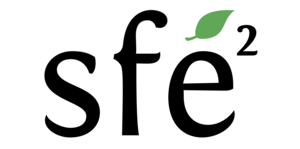Start proposed: between april 2024 and summer 2024
Location : Paris (and Nancy)
Context and aim:
European forests are grappling with the impacts of climate change, which have escalated in recent decades, leading to uncertain consequences. This uncertainty makes it challenging to predict wood production accurately. Nevertheless, addressing this issue is pivotal for the forest-wood sector, enabling effective planning for harvest, sustainability, and resource renewal.
In light of climate change, it becomes imperative to explore silvicultural practices with a lower objective density. Such practices could potentially mitigate the evapotranspiration of stands, reduce precipitation interception, minimize the use of soil water reserves, and enhance recharge. However, adopting management scenarios with lower density (and reduced Leaf Area Index – LAI) gives rise to numerous questions regarding their quantitative impact on water flows, ecosystem functioning, and wood quality. Notably, these low-density stands are inadequately considered in existing forest production models, whether dendrometric or process-based. There is an urgent need to scrutinize and assess the relevance, true potential, and limitations of these management strategies.
To address these issues, it is essential to employ new projection tools that account for both climate evolution and evolving management practices. In this context, we propose utilizing the mechanistic model CASTANEA, an eco-physiological model at the stand scale. While such models are increasingly common in management assistance, they are still not widely operational in practical applications. Our project will specifically concentrate on sessile oaks, pedunculate oaks, and Douglas fir stands—three crucial species for the future sustainability of forests.
Scientific questions and objectives :
Within this study, we aim to address a pivotal question: Will the implementation of low-density forest management enhance resilience to water stress in oak and Douglas-fir stands amidst the challenges posed by climate change, as compared to current management practices?
Technical challenge :
The resolution of this question is underpinned by a critical technical challenge: Is it feasible to apply an eco-physiological stand model to low-density forest stands, and under what specific conditions can this be achieved?
Planned tasks:
To accomplish these objectives, the post-doctoral fellow will undertake three distinct tasks:
1. Enhance the CASTANEA model
Numerous avenues are being explored to enhance the CASTANEA model, building upon previous work related to carbon allocation, dendrometric relationships, integration of thinning, and the addition of hydraulic dimensions.
2. Assess the Model’s Limits in Representing Low-Density Stands:
The primary goals of this sub-task include testing the limits of the CASTANEA model at extreme densities, particularly very low densities. This involves defining the domain of validity of CASTANEA concerning density points and generating ideas for expanding this domain.
3. Conduct Projections to Test a Management Panel under Varied Future Conditions:
Building upon the insights gained from the first two sub-tasks, the focus will shift to making projections and testing a management panel under different future conditions. Collaboration with ONF-RDI is planned to design management practices for testing in future projections. The subsequent step involves adopting a relevant simulation plan to address the overarching question: Will low-density forest management contribute to enhanced resilience against water stress in oak and Douglas-fir stands in the face of climate change compared to current management practices?
Working environment:
This post-doctoral contract is part of a project funded by ADEME: DENSPROFOR.
The main host laboratory is UMR ESE (https://www.ese.universite-paris-saclay.fr/). The post-doctoral fellow will work with researchers from EV (the plant ecophysiology team) and will be supervised by Christophe François, with the involvement of Nicolas Delpierre. The post-doctoral researcher will be offered the opportunity to spend part of the post-doc in the SILVA laboratory in Nancy, where are located other researchers of this project.
Other partners are associated to this post-doctoral project:
• Researchers from UMR SILVA (https://www6.nancy.inrae.fr/silva/), in particular mechanistic (Marion Jourdan, coordinator of DENSPROFOR project) and phenomenological (Julien Sainte-Marie) modellers and silvicultural experimenter (Ingrid Seynave).
• The engineers of the ONF-RDI of Dôle, Salomé Fournier and Thomas Cordonnier.
Required skills:
• PhD in plant ecology/ecophysiology and background in environmental physics;
• Demonstrated publication skills ;
• Working knowledge in programming in one computer language at least;
• Strong interest in the modelling of complex systems;
• Working knowledge of the English language;
Work details:
• Post-doc grant 23 months duration, starting between December 2023 and summer 2024
• Net salary: 2143 € per month – with social security
• 865 € reimbursement for public transport
How to apply:
Send a detailed CV, application letter and coordinates of 2 reference persons:
• Christophe François (ESE, Saclay): christophe.francois@universite-paris-saclay.fr
• Marion Jourdan (SILVA, Nancy): marion.jourdan@inrae.fr

Commentaires récents